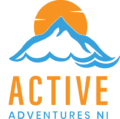You are being controlled by fear. Break Out!

So you’re afraid of going out of your depth. You don’t know what’s underneath you, you have images of slipping down into the depths, the blackness.
What you’d like to do is have fun in the water. You might think if you’re afraid of water you can’t surf, swim, paddle board, kayak or coasteer. What if I told you, you’re wrong. You’re not afraid of the shower or the bathtub, or the kitchen tap. You’re afraid of drowning, of dieing. That is a legitimate, real fear. So how do we remove that risk?
When you arrive for your session, we explain the plan. Often the first question we ask is “have you done this before”? From there, we can judge your ability level and create a bespoke journey for you. Let’s look at Mark for example. Mark is 34 years old, he attends a running club once a week, works in the warehouse of a manufacturing company. When Mark was 14, his parents took him to Donegal. While swimming at the beach, he suddenly found himself out of his depth, treading water desperately. Mark quickly ran out of breath. He was able to shout for help once before he slipped under. When he came to, he was lying on the beach, surrounded by people, embarrassed, terrified and vowing never to make the same mistake again. How can we re-introduce Mark into the fun, adventurous, embracing, beautiful sea around us? How can we help Mark break through this barrier of fear?
Firstly, we offer a range of courses. From our “balls and falls” course for the more experienced, to the rock pool journey.

We carefully give you a well fitted wetsuit. Wetsuits provide buoyancy. The material the modern wetsuit is made from has significantly less volume than water, so a wetsuit will always float. This provides extra buoyancy to you in the water. How does a wetsuit keep you warm? Neoprene has lots of microscopic nitrogen bubbles.
These nitrogen bubbles provide a layer of insulation; keeping your body heat within the wetsuit and keeping the cold sea water out. A common myth is that wetsuits keep you warm by trapping warm water between you and the wetsuit. In reality, a warm, dry wetsuit will provide you with more heat than a cold one. However, when water enters the wetsuit, it does become warm by being trapped. When this is flushed out, it is replaced with cold sea water; that’s why we endeavour to provide you a well fitted, dry wetsuit.
We provide you with a well fitted, adjustable buoyancy aid. Buoyancy aids are designed to have a greater amount of flotation around the chest. This means, no matter what happens in the water, your natural position will be on your back, nose and toes out of the water.
We provide neoprene socks and gloves, to keep you extra warm.
We provide you with mentors, guides, instructors who all have achieved high standard water safety qualifications and experience; Beach Lifeguard Qualifications, River rescue training, triathlon and open water experience.
If you take all these things together, what you have is an unsinkable, warm Mark. Now he has been given the tools , the right info and the right guides to enjoy whatever he wants to enjoy, surfing, kayaking, coasteering. No longer will his fear of drowning impede his summer plans. Now he can give a SUP board or a kayak a try, then next time he’s on holiday he can actually enjoy the beach, or explore the coastline. Mark’s world has just become much more adventurous and a lot more active.
Shane
Lead Kayak Guide
RNLI Beach Lifeguard Trainer
BSc Psychology
Mental Health Practitioner

